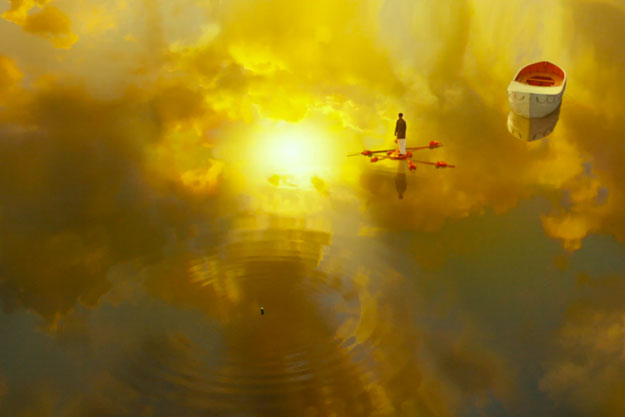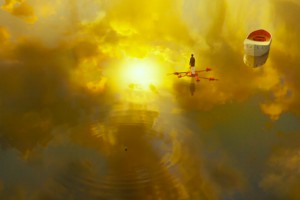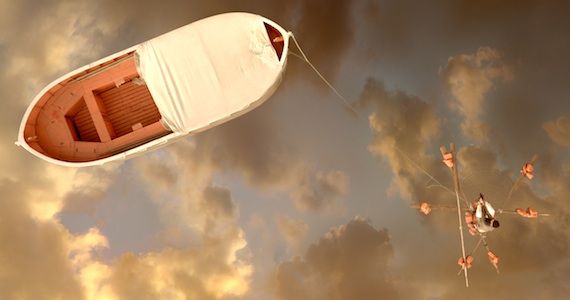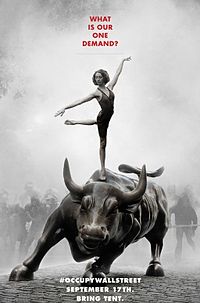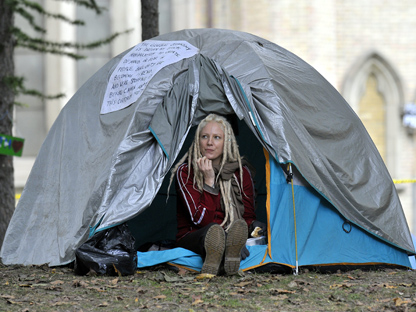For immigrants over the age of 30, poor, and from a non-English speaking country, the priority after landing Canada is certainly survival. I am one of them and I can tell you it feels like you fall into the rushing water of a river and you are scrambling to hold on to anything from being washed away. In this desperate surviving mode, you do whatever jobs the market has to offer; you don’t have much a choice. My inquiry is, over the course of life transition, can they expect to have a little luxury to do a career they really like, or is this simply asking too much?
Many immigrants would probably agree with me that: language is power; age is possibility; financial well-being is everything. Disadvantaged in all these three fundamentals, what do you expect from your life? Can you expect freedom? Can you work towards self-actualization? My roommate eight years ago would shake his head at these questions that he deemed idealist and irrelevant. His name is Dayong, a soft-spoken middle age Chinese who by then had been living in Canada for four years. He worked as a labor at a factory warehouse eight minutes walk from where we lived. His typical day was like this: got up early, ate, walked to work, worked, ate lunch, worked until very late, returned home, ate, then went to bed. He repeated this routine six days a week, and on the seventh day he was busy with grocery and other necessities, and then another week started. For fifteen two week in a year and four years in a row, he had been living like this. The eight minutes’ walk distance was the size of his world. He hardly spoke, never complained, and always maintained a neutral feeling. He was “the subaltern who never speaks.” His emotionless behavior pattern was as predictable as the movement of the second hand of a clock. The only liveliness I could find about him was through his closed door at night before bedtime I could hear some indistinct conversation he had over the Internet with his wife and young son in a rural China. Even at those moments, his tone of voice sounded robotic.
For a long time, I was fully convinced that he was the latest model of robot with artificial human fresh. I did not realize he was a real fresh until one day he was seriously sick by working too much. So he was not a robot; then he must be a slave. Since he was sick and home bound that day, I took the rare opportunity to have a conversation with him. I asked: “Do you ever have any days off?” “Why taking a day off?” he was surprised and asked me back. I said: “To relax. How do you entertain yourself in your leisure time?” He looked confused and after a moment he said: “I don’t know. Maybe my one and only entertainment is sleeping.” I said that was not the right answer. “What do you do for fun?” I rephrased my question. He answered with an embarrassing smile: “Nothing makes me happier than the moment I receive my wage. That is my fun.” He then added in his defense: “I know little English. What can I do? “I continued my question: “Are you happy with your life?” He was now a bit annoyed and replied firmly: “Traditional Chinese like me do for our next generation. As for ourselves, not relevant!”
The last answer struck me a deja Vu feeling. It sounds all too familiar from the story my mom told me about of my great grandfather who emigrated to British Columbia as a laundryman more than a century ago. He was basically a washing machine made of human fresh, running full capacity from early morning to night each every day for years, using both his bare hands. With that hard-earned money, he returned to China to take care of his family. Without that money, my grandfather wouldn’t have been born, and it would have been no me. That was 120 years ago. Time passed, head tax gone, labor law in place, Canada has transformed into an immigrant friendly culture. Yet, the Chinese laborer still retains their work ethic: enduring as much hardship as possible for the sake of the family. For a second, I got goose bump by thinking this man in front of me was the reincarnation of my ancestor. I had to move out.
There was no way I would live a life like this. Yet, it was hard to dismiss the nightmarish Dayong’s life as an extreme scenario; I had seen many new immigrants continue to work at a job that they dislike and they care little about having fun in life. Was I destined to be one of them? Maybe not. Maybe those people over compensate the sense of insecurity by putting too much in work over life, too willing to compromise from their bottom line, and too soon to write off their alternatives. Maybe things weren’t that bad. Maybe I was different from them. After six month of living in Canada, I asked myself: what kind of life do I wanted? What are my chances?
By profession, I was an established journalist in China, but I could not practice the equivalent jobs in Canada because my English writing was elementary. A career I would really like to try was creative artist, but I had no education for that. I desired an English-speaking lady to be my wife, but I seriously doubted it would happen since my English could carry me no further than the conversation of everyday business. I had been a passionate knowledge seeker in China. Now in Canada I was hungry for the delicious English books like an intellectual wolf, wanting to devour the entire bookstore, but I was choked down by the first paragraph of the first book I picked up because of the paucity of my vocabulary. My ideal lifestyle was to dress nicely, sit at a nice cafe with some nice local friends, and then carry out a nice in-depth intellectual discussion on arts and culture, but the truth was I lacked the Canadian or Western cultural sensitivity or knowledge; I would look like a nice idiot in that café with the intelligent people. These goals were achievable only after my English level had skyrocketed and only after I had completed a systematic education in Western culture. The process could be dauntingly long. Given my age, it seemed unrealistic. My ever-shrinking balance of bank account also said negative.
The gap between what I wanted and what I got was further deepened by my family concerns. I am from a collective culture and still tightly connected through my parents
back home. The prospect of my aging parents was dependent on me, their only son. I was in my early thirties, an age considered by Confucius and my dad as the cut off line for success or failure. If I hadn’t established myself by this time, my dad would live in shame. By his standard, establishing oneself means securing a stable income and owning a house. Another thing expected from my age was getting married and having children. “Having a grandchild is the one and only request I have on you for my entire life.” My once domineering dad was trembling his pleading voice over the phone. Hearing this, I felt a sense of guilt engulfing all my audacity, tormenting me like hell. All things considered, it seemed in my best interest to secure a job, work hard like Dayong, and marry a Chinese-speaking woman. With the status quo of being disabled by language inadequacy, restricted by financial difficulty, shackled by the collective value, could I possibly pursuit what I desires against all odds, particularly in the days when many Canadians reported being enslaved by the overpowerful market system of Neo-liberalism? One night, looking at myself in the mirror, I said NO. I want freedom!
So instead of going to a professional college, I took student loans to go to the University of Toronto and carried out my long-term plan, titled “systematic education on Western knowledge.” I started with a fine art program, which realized my childhood dream of painting and drawing. I got up every morning, thrilled at the sight of my painting brush, and I believed the messy painting studio was what paradise should look like. That said, the survival concern was still nagging me some time. “You can work at a restaurant.” My professor addressed my worry. I thought that was his humor. In China, serving in a restaurant was a job looked down upon. Nonetheless, building a career as an artist must be hard, but I was up for the challenge.
The immediate challenge was always English at any given moment of my endeavor. In the first lecture of art history, I was shocked to find out I could not understand a single sentence. Bearing my goals in mind, I was highly motivated to dramatically improve my English. In fact, I wanted to genetically modify myself with English. So, I was being creative in the process of learning. After I painstakingly looked up many new words everyday, I turned them into recordings every week. Then I loaded the recordings on my portable electronic device, and listened as if they were the Billboard hits, using every minute I could find. Brushing my teeth in the morning, I was on my earphone; doing grocery, lining up in the bank, eating food, or anywhere multitasking was possible, I was always the new word nerd on the earphone.
Some of my ways were eccentric. I did Buddhist meditation while playing CBC Radio One in the background, hoping that the language would penetrate my mind deeper in the meditative stage; I hypnotized myself into believing that I was born an English speaker, based on the theory of “Fake It Until You Make It;” I brought with me the flash cards of new word when I was doing my business on a toilet. I would never forget the new words by staring at them when experiencing intense bodily sensation.
Perhaps the most effective way was the self-isolation from the Chinese community. For four years, I basically spoke no Chinese to no one except my parents on the phone.
Learning a new language and learning a new culture is the same thing. Since I needed a systematic education, I actually started with pre-school kids. I went to a public library and sat within a hearing distance to the kid’s section, and then I put on my sneaky ear to hear the stories the teacher was telling. As a veteran Chinese writer, I could tell a sophisticated story in Chinese, but to tell an English one, I got to start from the most basic. It felt like a long-legged supermodel taking baby steps, but I enjoyed doing it. Then I searched out the high school curriculum and read their textbooks in library. In university, I took up many courses in a wide range of disciplines in the Humanities. For Chinese students like me who were well trained in high school in mathematics but little in the Western Humanities, these reading intensive courses were overwhelming. Somehow I managed to keep up by working very hard. For four years, I allowed my curiosity to lead the way, and I exceeded my Bachelor’s degree with several extra credits.
The rampage of four-year learning still could not make the cut. I still felt lame in an in- depth intellectual discussion. I could have learnt faster if I had an English-speaking girlfriend. So I approached a Canada-born Chinese girl, but I failed to date her. I could have succeeded if I could impress her with an in-depth intellectual discussion. While achievement were slow, consequences set in. Because I was trying too hard, my life was out of balance. There was tremendous amount of accumulated loneliness torturing me. My parents were in depression after all expectation from me failed utterly. My mom was on medication and the picture she sent me, showing her hair all turned grey shattered my heart. I doubted my decision. Life was in a mess. All my life savings were gone. The survival concern became a reality. I had to go for a cheaper rent so that I could put food on the table. I stopped study like crazy. I had to take some part time jobs to support myself. However, for better or for worse, once you went through a threshold, you just could not stop. I had become an addict to knowledge. As Steve Jobs tells me: “Stay hungry, stay foolish,” I went back to university for another three years and got two Master’s degrees.
Maybe things weren’t that bad. Although I was poor and lonely in my fourth year in Canada, some positive signs had started to emerge. When I ended my self-isolation from the Chinese community, and I showed up at a social event, I suddenly realized that my chemistry had changed. Part of my mind was thinking like a Canadian. The Chinese thinking was still there as always, but there had now been a new English channel inside of me. This new channel was growing, and it seemed it had its own worldview. It felt like I was growing another self inside of me, like Dr. Evil’s “mini me” in the Austin Power movie. Unlike the “Chinese me”, this little one was an innocent blank slate, and I nurtured him from pre-school story telling to college, feeding him with new values, and teaching him new manners and everything Canadian. He was completely free from evil.
Now I have been living in Canada for nine years. I feel much more free now. Although language and culture learning is still in progress, I no long feel crippled by it. I am now much more comfortable with talking with people, including some intellectual conversation. I frequent the bookstore and read like everybody else. I gratuitously believe that I am on top of 1.3 billion people of Chinese on the other side of the ocean because very few of them could have this depth of touch with English sensitivity and cultural nuance. Age means nothing but a number. Possibility is limited only by imagination. A hard working immigrant like me who have made this far should have any reason to believe a better financial status is coming my way. I am very positive about Canada. I believe Canada is a miniature of the utopia world where all inter-cultural animosity has been eradicated and different people are living together happily ever after. I no longer cocoon myself in my tiny comfort zone; instead, I go out and celebrate cultural diversity. I am not quite sure how much of it is stereotyping, but I can easily and celebratorily say a few things to a random person about his or her random country. I certainly go further than my Canada born neighbor who claims that he can speak the meaning of “hello” in 37 languages. On a serious note, I am happy that I now have the means to make my voice heard for the group of unspoken immigrants.
With this comfort level, I was sitting in a nice cafe with a Korean girl who grew up in Toronto and worked for an IT company. I took the liberty to show off my intellectuality. “What did you study?” She asked. I proudly told her I studied fine arts and I had a Master degree in art history. After a silence, she said: “My younger sister did that too. Why do you guys all take the easy way out, picking on easy subjects. Why not challenge yourself to study mathematics and science, which will bring you a better future. You probably have no idea how hard it is to be an Asian born in Canada.” So the talk went downhill. I remember the last thing I said to her was: “Things that you take for granted could be something that someone else has been fighting for with all his might.”
Dismayed, I left the café into the street. As I was thinking: “I hate reality check,” a Chinese family was walking on the sidewalk facing my direction. The father was holding a young daughter on his arm, with the wife behind and a teen son to his left. “Dayong!” I cried out. Eight years has passed since we last met, he had a much better complexion and spirit. Apparently, his life had changed. He now had a happy family around him, and he told me he had owned the very house where he used to live as a tenant in the basement. I was happy for him and asked how he had arrived at this success. He told me he was still doing the same routine in the same job. I looked at him in disbelief, but he paid me no attention and continued to brag about himself with a triumphant smile on his face, as if he was enjoying his American dream accomplished. As he spoke, I noticed his tone of voice has become lively, particularly when he asked me: “What do you do now?” I told him I was looking for a job at a restaurant as a server. He looked at me in disbelief. I told him: “Maybe things aren’t that bad,” and I went on to tell him I got my second Master degree last year, and I was going to establish myself as a creative artist. Before we departed, I asked if he knew of any cheap place for rent. He offered his basement. I said I would take it. My future will begin at Dayong’s basement. By all means, I could survive.
